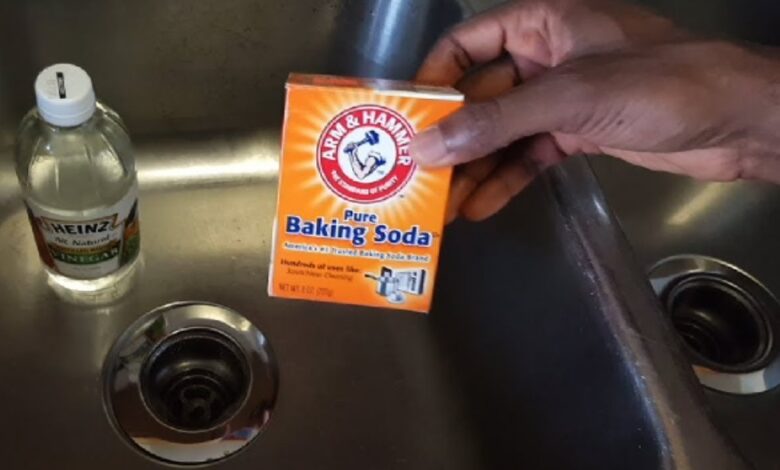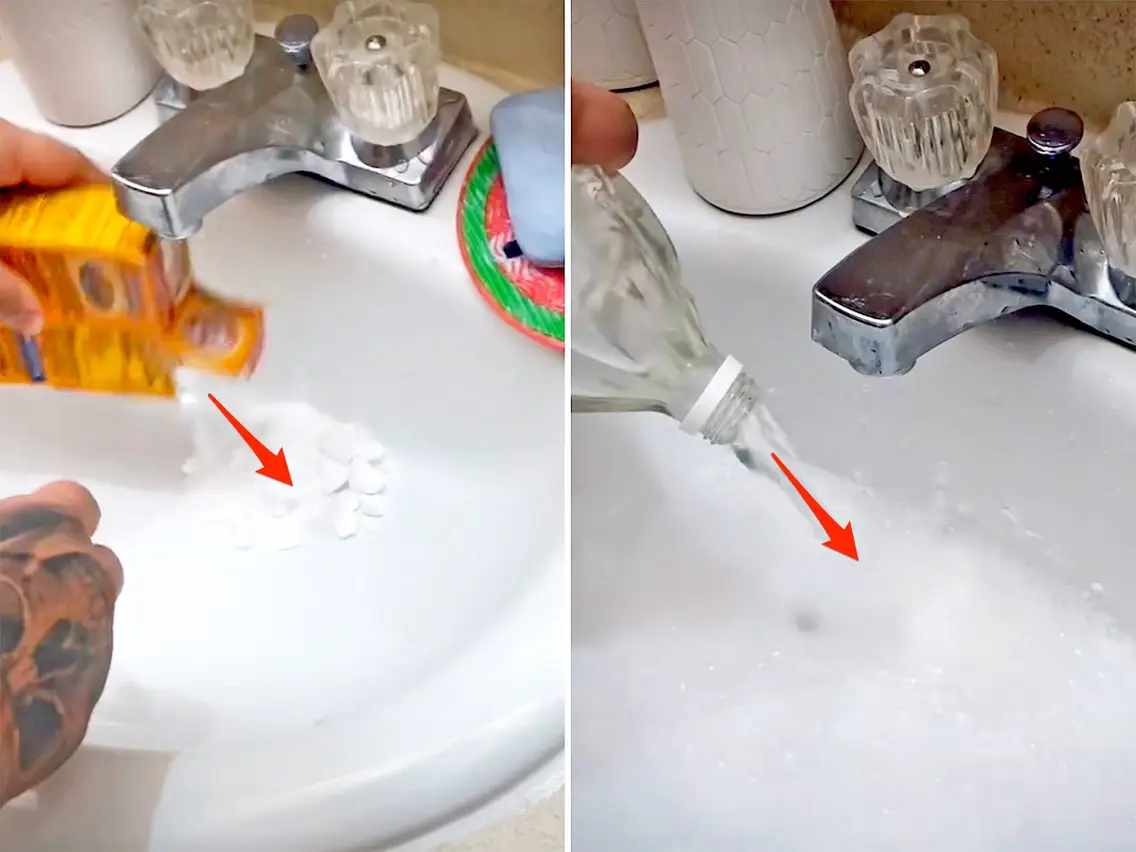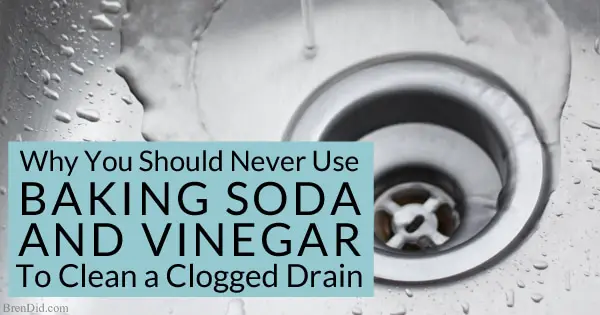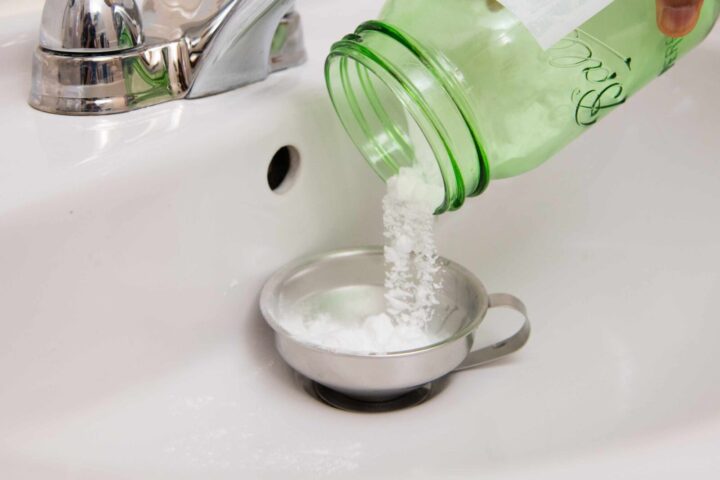Is It Safe to Put Vinegar and Baking Soda in the Drain?

It’s a question we’ve all asked ourselves at least once – is it really safe to use the age-old combo of vinegar and baking soda to unclog the kitchen sink drain? We know our grandmothers used this method, but is it really sufficient in today’s world? Let’s delve into the science behind these two ingredients and find out once and for all if it’s worth the effort.
Benefits of Using Vinegar and Baking Soda in the Drain

Although it may seem like a strange combination, vinegar and baking soda can be a helpful cleaning solution for your drains. The two natural ingredients are non-toxic, economical and effective for many common problems.
By using vinegar and baking soda on a regular basis, you can help prevent plumbing issues such as clogs, odors and slow drains from occurring in the first place without having to resort to commercial chemical cleaners. The acidic vinegar helps to dissolve sluggish debris in the pipes while the alkaline baking soda neutralizes acidic odors and lifts off grease buildup.
Mixing equal parts of white distilled vinegar and baking soda provides an easy-to-use sink maintenance solution for your home. To use, just pour the mixture down your drain or garbage disposal unit, wait 15 minutes or so before flushing with warm tap water. This process should be repeated once or twice per month for best results, depending on the needs of your particular household drain system. Many professional plumbers like misterplumber.ca, are recommending this type of solution for your drain system.
By following this simple recipe, you can keep your sink working efficiently while also reducing environmental waste that is often caused by commercial chemical products found in most stores. Taking advantage of this safe method not only saves money but helps protect the environment too!
Potential Risks of Using Vinegar and Baking Soda in the Drain

When used responsibly, it can be safe to use vinegar and baking soda in it; however, there are some potential risks to consider. It is important to understand the corrosive effects of vinegar on metal, the potential health hazards of consuming baking soda, and the uses for other types of cleaners.
Vinegar is an acid, and over time it may weaken metal pipes due to corrosion. It may also damage rubber components used in many plumbing fixtures. Therefore, if you choose to use vinegar, it should be done sparingly and in parts of the system that don’t contain metal or rubber parts.
Baking soda is generally safe for consumption but should never be consumed in large quantities for extended periods of time. Baking soda can cause damage if ingested in excess; therefore, users should take caution about what goes down the drain when using vinegar and baking soda.
Finally, more traditional methods such as commercial drain cleaners may be used from time to time as a preventive measure or if a larger clog forms that cannot be cleared with vinegar and baking soda solutions alone.
How to Use Vinegar and Baking Soda in the Drain
Using vinegar and baking soda together in a drain is an effective, safe and natural way to clear blockages quickly. However, it is important to understand the correct process to ensure that any problems are nipped in the bud in the best possible way.
Using just baking soda alone can help eliminate surface gunk but will not address underlying problems. Vinegar, on the other hand, can help to remove clogs further down your drain pipes, but pouring it directly down your drain can cause a foaming chemical reaction that can harm pipes and increase pressure build-up which could lead to blockages further down.
Therefore the best way to use vinegar and baking soda together is to:
- Mix them outside of the pipe with equal parts of each ingredient before allowing them to make their way slowly down your drain – either using a funnel or jug – as this prevents potential damage due to pressure build-up.
- This should be done each time you want your drains cleared for maintenance purposes or if there is a blockage.
- To enhance this process further you should let the mixture sit for up to 15 minutes before flushing out with hot water or running the tap or shower at full power for several minutes afterwards.
Alternatives to Using Vinegar and Baking Soda in the Drain
When it comes to unclogging and cleaning pipes, vinegar and baking soda are often recommended as home remedies. While this combination may be effective in some cases, it is important to understand the potential dangers of using these products together. Vinegar and baking soda can react to produce toxic fumes which can be hazardous to your health if inhaled. The combination can also cause corrosion of metal pipes and surfaces if used in excess or left for too long.
Fortunately, there are many alternative methods available that are equally effective in cleaning drains without these potential risks. Boiling water is an inexpensive option for slowly melting small clogs, and stands up well against baked-on grease, soap scum, and other organic material. Store-bought chemical drain cleaners work well on tougher clogs but should be used with caution as they contain strong chemicals that can irritate skin or damage surfaces when mishandled. For more extreme blockages, a professional plumber may be required for safe removal of the obstruction or replacement of parts such as the P-trap or drain cover gaskets.
Before attempting any drain cleaning method at home, make sure you understand the proper use and safety precautions associated with each method you choose – your family’s health could depend on it!
Conclusion

In conclusion, a combination of vinegar and baking soda is effective in cleaning drains if used in moderation. For best results, use a ratio of one part vinegar to two parts baking soda; be sure to flush the drain with hot water afterward. Regular use of this natural remedy should keep your drains clean, preventing clogs and other backed up muck.
However, if your clog does not respond to this treatment, it is best to contact a professional for assistance.
